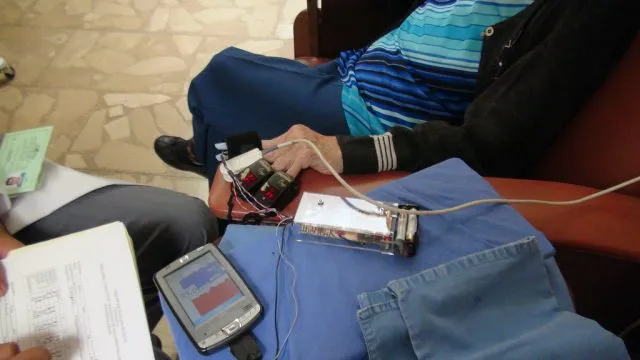Researcher at the National Polytechnic Institute developed a computer system that operates in conjunction with a biodispositive to monitor the vital signs of patients with diabetes, hypertension and obesity, and allow the doctor to perform a timely and effective evaluation.
Víctor Jalil Ochoa Gutiérrez, teacher in computer science of the Interdisciplinary Professional Unit of Engineering and Social and Administrative Sciences (UPIICSA), explained that the bioavailability has a mobile system for measurement of vital signs such as thermometer and oximeter, with which you canPerform a patient's health analysis and send the data via the Internet to the doctor.
The bioavositive is autonomous and measures the values through the interaction of a light with the skin of the finger, processes the information and sends it in real time to a database without installing a mobile application or special operating systems.In addition, it works to operate in several areas of the body.
The analysis reaches the doctor, who "is the important factor because he is responsible for giving meaning to the data, turning them into valuable information and being able to detect diseases or prevent them, such as obesity," said engineer Víctor Jalil.
The member of the Mexican Society of Biomedical Engineering, mentioned that the idea is to centralize the information so that it operates with the Mexican electronic clinical file and through the computer system the patient's medical history is stored in order to be analyzed in any hospital,Regardless of whether it is public or private, it also supports the diagnosis.
"That I acted similar to the health model that of the United States, in which the information is centralized and the treating doctor can enter the patient's history in any entity, know their health and the best way to treat it," said the specialist.
The device and the computer system were developed according to national standards and were endorsed by the National Institute of Respiratory Diseases (INER), the Santa Rosa Hospital in Mexico City, the 170 Family Medicine Unit, of the Mexican Institute of InsuranceSocial (IMSS), in Puerto Vallarta and the Santa Rosa Hospital, Family Unit 170 Clinic, German Clinic of Valdivia in Chile, where its real -time effectiveness was proven.
The innovation that is intended to have ended in three years has two registered trademarks and a patent before the Mexican Institute of Intellectual Property (IMPI), five rights before the National Institute of Copyright (Indouuter) and the interest of a private hospitalTo continue the project in a second phase.
In addition, for the development of the system created so that the bioavositive interact with the human fabric, obtain the signals and process digitally until obtainNational Association of Institutions of Education in Information Technology A.C.(Aniei) in November 2015.
Víctor Jalil commented that “the use of mathematical, optical technological models and better processors will give rise to a new generation of biodispositive, not only at the national level, but international, an action that will be achieved with young people committed to the development and innovation in the area ofhealth ”.
He also presented his project at the First National Meeting of Youth in Engineering held by the Academy of Engineering of Mexico, where he said that “the most valuable capital that Mexican society has in its youth.I did not imagine where my ideas and dreams could take me, when you intend to do what you are passionate about, even if you cost you and fall, you will achieve it, there will always be a friend who will help you. ”


